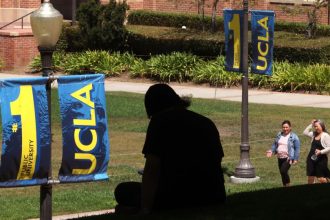A large portion of K-12 students in Ohio choose to attend charter schools compared to other states.
Ohio has the tenth most students attending charter schools of any state in the country, according to 2022-2023 enrollment data, the latest from the National Alliance for Public Charter Schools. More than 100,000 students attend the roughly 300 charter schools in Ohio.
The schools are considered public and receive taxpayer dollars, but operate differently from public schools that are run by a district. So, what exactly are they?
Advocates say charter schools ‘provide choice’ in public education
Ohio charter schools are called community schools by the government. They’ve been around since the 1998-99 school year, according to the National Alliance for Public Charter Schools.
Advocates say charter schools have a “mission-driven approach.” They often open to meet a specific need that the public school district doesn’t. Dohn Community High School in Cincinnati offered a credit recovery program for adults and high school classes for students with behavioral issues. Other examples are sports-focused schools and aviation-focused schools.
The idea behind chartering was “to provide choice through public education,” said Jim Goenner, president and CEO of National Charter Schools Institute.
Kameala Winbush works on her independent study work at George and Veronica Phalen Leadership Academy, a charter school in Indianapolis, in May 2015.
Charter schools receive taxpayer dollars but are run differently
Charter schools are semiautonomous public schools, according to the Education Commission of the States. They operate under a written contract, known as a charter, which outlines how the school will be organized. Many are exempt from certain laws and regulations that affect public schools.
Ohio charter schools are established by a sponsor that ensures schools follow their contracts and, every five years, determines if the school will be renewed and continue to operate as a public charter school. A state, city or local government can be a sponsor, as can a public or private university, or a nonprofit or for-profit corporation.
School boards also oversee the schools. Board members are appointed rather than elected.
Like public schools, charter schools receive state funding based on student enrollment and federal funding. Unlike districts, Ohio charter schools don’t receive local property tax revenue, except for a handful of schools, according to the Ohio Department of Education and Workforce.
Anyone in the state can enroll in a charter school.
This article originally appeared on Cincinnati Enquirer: How Ohio charter schools differ from traditional public schools









